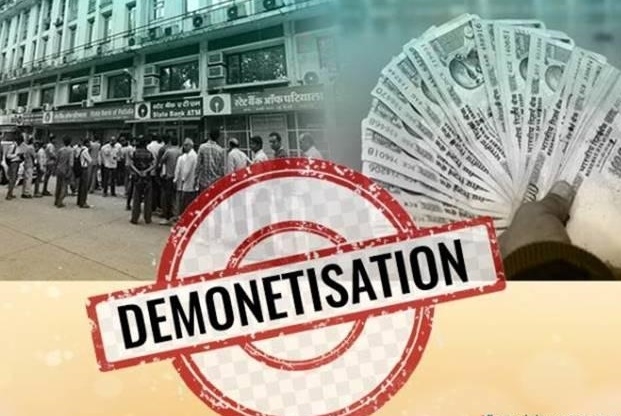3 years of Demonetization! Where do India and its citizens stand now? Has it really helped, how?
Total Views |
By Siddhi Somani :
On November 8, 2016, the Government of India in a landmark move, discontinued from circulation, ₹500 and ₹1000 denomination currency notes; they were no longer deemed legal tender.
The objective behind this move was to curb black money, stop funds flow to unlawful activities such as terrorism and growth of illegal markets, make citizens accountable for every rupee they possess, and move towards a corruption-free and Digital India. On November 8, 2019 today, we merrily have completed 3 years since demonetization was declared. Where do India and its citizens stand now? Has demonetization really helped and how? Let us have a check:

FAKE CURRENCIES
Fake Indian Currency Notes (FICN) business in India has always been a big, bad business. Demonetization put an immediate shocking stop to the production of counterfeit notes. Between 2011-2016, supply of notes of all denominations had increased by 40%. However, the supply of only ₹500 and ₹1,000 banknotes increased by 76% and 109% respectively.
This trend reflected that 500 and 1000 denomination currency notes were supplied more than the demand. In the Madla district of West Bengal, infamously called India’s counterfeit capital, district police had seized ₹1.14 crore in FICN in 2016. In the same area, the Border Security Force had seized FICN of ₹1.35 crore and ₹2.5 crore in 2016 and 2015 respectively.
TERRORISM AND RADICAL GROUPS
PM Modi’s demonetization did severely hit the Naxalites and Maoist. The surrender rate reached its highest as the money these groups accumulated over years suddenly had no value. The then Defence Minister, Manohar Parrikar, also noted that stone-pelting incidents in the valley had seen a drop.
The relation between terrorism and counterfeit currency cannot be challenged however. David Headly, terrorist of the 26/11 Mumbai attacks had declared that ISI had provided him with counterfeit Indian currency. Similarly, bomb expert Syed Abdul Karim Tunda, who headed almost 40 bombings in India had said upon arrest in 2013, that he had taken delivery of many consignments of CFIN from an ISI officer.
DIGITALIZED ECONOMY
In an article in DNA, Late, Former FM Arun Jaitley had said that demonetization was an attempt to change the spending habit and lifestyle of Indians. Demonetization actually achieved this goal as the number of online transactions (₹250 and less) has increased by more than 177%; transactions in the range of ₹250-500 increased by 135%.
Similarly, the demand for point of sales (POS) or card swipe machines have also increase. According to Indian officials, the number of Income Tax Returns filed boomed from 2,26,97,843 (2016-2017) to 5,65,20,120 (Sept 1, 2019), registering an increase of more than 56.7% compared to growth rate in the previous year.
BLACK MARKETS
Counterfeit currencies and money that is smartly unaccounted starts building a parallel or shadow economy, which then funds more parallel economies ahead. A very common term associated with shadow economy is Hawala. Post demonetization, Hawala operations suffered major setbacks in Mumbai, Kerala, and Jammu and Kashmir. Also the Central Board of Direct Taxes detected an undisclosed income of around ₹93.34 billion in the course of approximately 2,400 searches, seizures, and surveys carried out in immediate four months (9 November 2016 to 28 February 2017).
UNLAWFUL ACTIVITIES
Demonetization also helped the government to crack down on unlawful activities such as slavery, poppy cultivation across thousands of acres and its sale, human trafficking and more. As per the 2019 Global Slavery Index, India is home to millions of people living in slavery and lakhs of children are believed to be trafficked within its borders. Prior to demonetization, all these activities funded by illicit and counterfeit currencies were drawing our nation into an abyss that seemed impossible to fight. Today, we stand at a much better position.
On 8th November 2016, when Prime Minister Narendra Modi informed the citizens that demonetization was a part of ‘Clean India’ campaign., though personalities such as Narayan Murthy, Anand Mahindra, Anna Hazare, and government heads of various other countries lauded the decision, there was anxiety and confusion among the masses.
Today, we can claim, that we have cleaned our country of many evils, albeit not completely, such as terrorism, human and drug trafficking, hawala, but driving on the way!